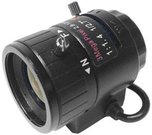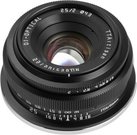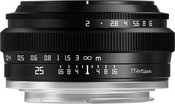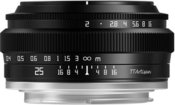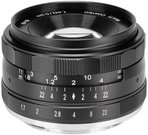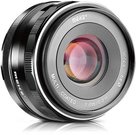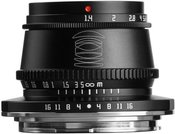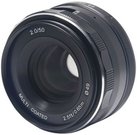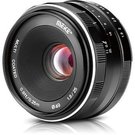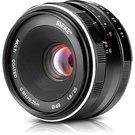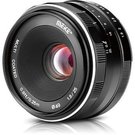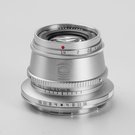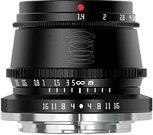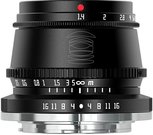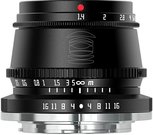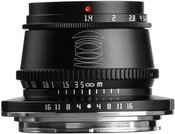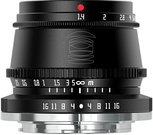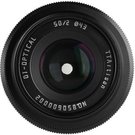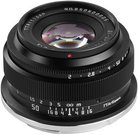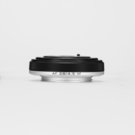Lenses designed for mirrorless cameras. These lenses are technologically very similar to DSLR lenses but incorporate newer technology. Mirrorless camera lenses allow more photons to pass through and work more precisely with the advanced focusing systems of mirrorless cameras. The lens specifications are similar to those of DSLR lenses: aperture, stabilizer, aspherical lenses, housing, focal length, and lens coatings with various materials.
MIRRORLESS CAMERA LENSES are lenses designed for use with mirrorless cameras. These lenses are part of an interchangeable lens system that allows photographers to choose different lenses depending on their photography needs and goals.
You can choose from wide-angle, portrait, standard, and telephoto lenses.
MAIN TYPES AND FEATURES OF LENSES:
- WIDE-ANGLE LENS: A lens characterized by a wide focal length range, capable of capturing a large visible area. These lenses typically have a small focal length value, usually from 10mm to 35mm (for APS-C sensor size), but this can vary depending on the camera type. The main feature of a wide-angle lens is its ability to capture a broad image field from one side to the other. This is suitable for landscape, architecture, interior, and other types of photography where capturing a lot of detail and space is important. When using a wide-angle lens, it creates an effect called "expanded perspective," which can add drama to a photo and enhance the sense of space. However, it’s important to note that wide-angle lenses can also create distortions near the edges of the frame, known as "barrel distortion," which should be considered when shooting certain types of scenes.
- PORTRAIT LENS: A specialized camera lens designed for photographing people, faces, and their expressions. This lens is optimized to create high-quality portraits with beautiful subject separation from the background and a naturally extended facial perspective. Portrait lenses typically have a small focal length value, usually from 50mm to 85mm (for full-frame cameras). The small focal length helps avoid distorted facial perspectives and creates a natural look.
- STANDARD LENS: A camera lens that has a focal length range that lies between wide-angle and telephoto lenses. These lenses come in various focal length options, but they usually range from about 35mm to 85mm (for full-frame cameras). Standard lenses provide a natural perspective that is neither overly distorted nor overly compressed, making them versatile for a wide range of photography scenes, including landscapes, portraits, street photography, and more.
- TELEPHOTO LENS: A lens that has a long focal length range and allows photographers to capture distant subjects without physically moving closer. These lenses have a longer focal length range than standard or wide-angle lenses, often starting at around 70mm (for full-frame cameras) and increasing to 300mm, 400mm, or even 600mm and beyond.
Mirrorless camera lenses stand out with their unique design and functionality, offering photographers an exceptional opportunity to create high-quality images. These lenses are known for their high optical quality, adjustable focus distances, great light efficiency, and wide-range apertures, allowing creators to express their creative potential and achieve professional results in various photography fields.




